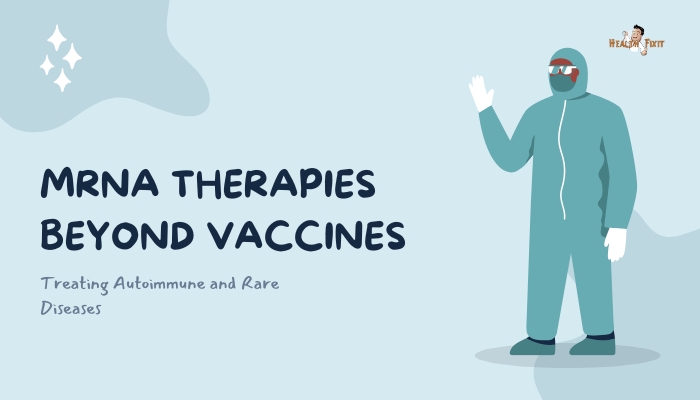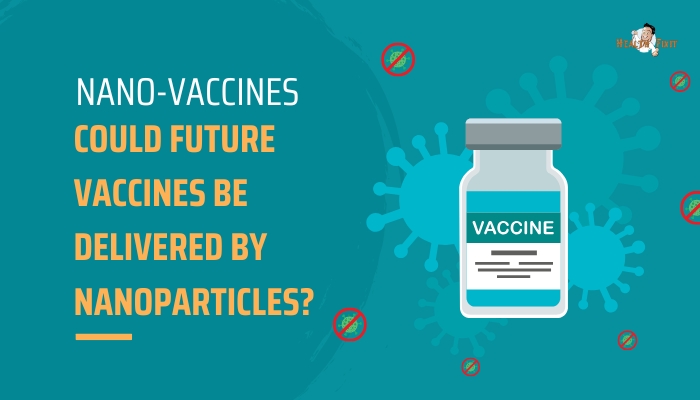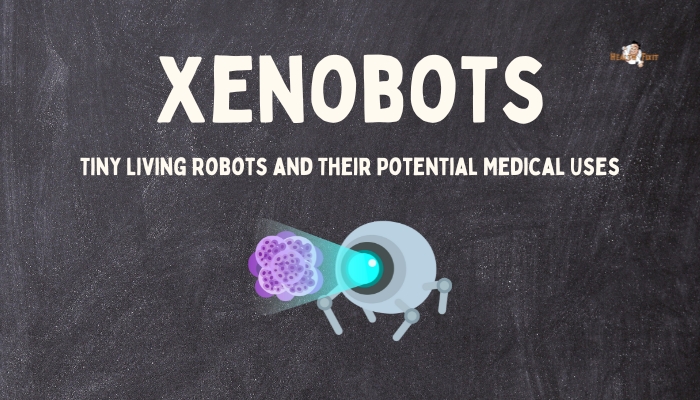Introduction
The rapid development of mRNA vaccines for COVID-19 showcased the versatility and speed of messenger RNA (mRNA) technology.
However, mRNA’s potential extends far beyond infectious disease vaccines. Research is now exploring how these synthetic strands of RNA might address autoimmune conditions, rare genetic disorders,
and even forms of cancer. By hijacking the body’s protein production machinery, carefully designed mRNA therapies could help correct disease-causing pathways or deliver missing proteins
. This article highlights the emerging world of mRNA therapeutics beyond vaccines, explaining their scientific rationale, current applications, and the challenges to widespread adoption.
Why mRNA Technology?
Fast and Flexible
Conventional therapeutics—like small-molecule drugs or protein therapies—often require long development cycles.
By contrast, mRNA can be rapidly designed and produced, encoding any protein of interest. Manufacturers can pivot quickly if a target changes or if new variants emerge, making mRNA especially adaptable.
Intracellular Protein Production
Unlike recombinant proteins made in bioreactors, mRNA therapies deliver genetic instructions into patients’ cells.
Cells then synthesize the desired protein directly. This approach may offer more natural protein folding and post-translational modifications, plus the possibility of precisely controlling how much protein is produced.
Potential for Combination
mRNA can encode multiple proteins in a single construct, simplifying combination therapies—for instance
, delivering multiple cytokines to modulate the immune system in an autoimmune disorder. This capability fosters synergy or more comprehensive coverage of complex pathways.
mRNA for Autoimmune Diseases
Tolerogenic Vaccines
Autoimmune disorders occur when the immune system attacks self-antigens. Scientists are exploring mRNA-based “vaccines” designed not to boost immunity but to induce tolerance
. By encoding self-antigens associated with diseases like type 1 diabetes or multiple sclerosis, these mRNA constructs might teach the body to ignore or regulate these targets.
- Mechanism: The mRNA is formulated to encourage anti-inflammatory responses, typically leveraging specialized delivery systems or co-delivered immunomodulators that steer T cells toward a tolerant or regulatory phenotype.
- Applications: Preclinical models in T1D have shown improved beta cell preservation, while for MS, certain peptides or proteins delivered via mRNA may reduce demyelination.
Cytokine and Immunomodulator Delivery
Another autoimmune approach is carefully delivering anti-inflammatory cytokines (like IL-10) via mRNA. Instead of systemic biologics,
which can be expensive and cause broad immunosuppression, mRNA might deliver localized, short-term expression of beneficial cytokines right at inflamed tissues, diminishing side effects.
mRNA for Rare Genetic Diseases
Replacing Missing Proteins
Many rare conditions stem from a gene that fails to produce a functional protein (e.g., certain lysosomal storage disorders).
mRNA therapy could instruct cells to make that protein, bypassing the defective DNA. This concept is somewhat parallel to gene therapy but is more transient and flexible, with repeated dosing as needed.
- Example: In Crigler-Najjar syndrome, a missing enzyme leads to toxic bilirubin buildup. Researchers investigate mRNA encoding that enzyme, administered periodically, to keep levels normal.
- Challenge: Repeated administration might be required because mRNA degrades, unlike a permanent gene fix. Also, consistent expression and immune acceptance of the new protein must be verified.
Potential for “Gene Editing Light”
While gene editing modifies DNA permanently, mRNA therapies produce ephemeral effects. For some disorders,
a non-permanent correction might suffice or reduce the risk of off-target genetic changes. Combining mRNA with other therapies might provide a stepping stone until full gene editing is refined.
Overcoming Delivery and Stability Issues
Formulation Innovations
mRNA is fragile and quickly degraded by enzymes. Lipid nanoparticles (LNPs) or polymer-based carriers protect the mRNA and facilitate cell uptake.
Next-gen LNPs aim to minimize side effects (e.g., injection-site reactions) and target specific organs or tissues, such as inflamed joints in rheumatoid arthritis or the liver in metabolic disorders.
Tissue Specificity
Broad systemic distribution could cause unwanted immune responses in healthy tissues. Designing vectors that hone in on disease sites or certain cell types (e.g., T cells, hepatocytes) is critical.
Researchers explore ligands on nanoparticle surfaces that bind receptors unique to particular tissues, ensuring localized mRNA delivery.
Immunogenicity Balancing Act
mRNA can provoke innate immune pathways, sometimes beneficial (vaccines) but detrimental if it triggers excessive inflammation in autoimmune therapy.
Carefully engineered mRNA—using modified nucleotides or purified sequences—reduces activation of sensors like Toll-like receptors. This strategy fosters enough, but not overwhelming, immune engagement.
Early Clinical Trials and Progress
Tolerogenic mRNA Vaccines
Some biotech firms have launched early-phase trials for type 1 diabetes or other autoimmune conditions,
testing whether repeated mRNA injections can safely maintain or restore tolerance. Though results are preliminary, they reveal feasibility and modest hints of efficacy in short-term endpoints.
Rare Disease Treatments
mRNA-based therapies for conditions like ornithine transcarbamylase (OTC) deficiency or other metabolic errors are in preclinical or early clinical stages.
Key measures include verifying protein expression and function while monitoring immune responses and ensuring no major toxicity.
Partnerships and Funding
Pharma giants, spurred on by the success of mRNA COVID-19 vaccines, invest heavily in these emerging applications, forming alliances with academic labs. This infusion of capital and technology fosters a robust pipeline, albeit with uncertain timelines for broad approval.
The Future Outlook
Personalized Combinations
In autoimmune scenarios, each patient’s immune targets might differ (varied self-antigens). Personalized “neo-autoantigen” mRNA sequences,
akin to personalized cancer vaccines, could precisely address each person’s disease triggers. That scenario requires advanced biomarker identification and on-demand mRNA manufacturing.
Chronic Dosing vs. One-Time Cure
Since mRNA is transient, repeated administrations might be needed—like a chronic medication. Next-level solutions might integrate extended-release formulations or synergy with gene-editing solutions.
Alternatively, advanced mRNA engineering might yield longer stability, reducing injection frequency.
Regulatory Landscape
Expanding beyond the COVID-19 success means regulators need new frameworks for mRNA’s next uses. Safety data must be robust—particularly in immunocompromised or complex autoimmune patients.
Collaboration between industry, agencies, and patient advocacy groups is crucial to expedite safe, proven therapies.
Practical Implications for Patients
- Stay Informed: While mRNA is a hot topic, many of these therapies are still in trials. Check with specialized clinics or research institutions about potential enrollment.
- Complement Existing Treatments: For autoimmune diseases, mRNA-based therapy might complement standard immunosuppressants or biologics, not replace them outright—at least initially.
- Long-Term Data: Efficacy in short-term trials doesn’t guarantee durable remission. Patients should weigh possible benefits with unknowns about repeated dosing or side effects.
- Genetic Testing and Counseling: If considering mRNA for a rare genetic disease, thorough genetic diagnosis is essential. Understanding inheritance patterns and family risks helps plan for the therapy’s potential or alternatives.
Conclusion
mRNA technology, once primarily associated with COVID-19 vaccines, is rapidly expanding its horizons into autoimmune and rare disease therapeutics. By leveraging the body’s protein-making machinery,
these therapies offer dynamic, potentially game-changing solutions—like “tolerogenic vaccines” to quell autoimmune attacks or delivering missing enzymes for inherited metabolic disorders
. Still, the path to mainstream usage faces technical, regulatory, and immunological hurdles. Yet with robust research and broadening investment
, mRNA therapy has the potential to reshape how we treat some of medicine’s most stubborn diseases, bridging innovative molecular biology with patient-specific care for lasting benefits.
References
- Sahin U, Karikó K, Türeci Ö. mRNA-based therapeutics—developing a new class of drugs. Nat Rev Drug Discov. 2014;13(10):759–780.
- Kovatcheva L, et al. mRNA vaccines and beyond: harnessing nucleic acid therapy for autoimmunity. Curr Opin Rheumatol. 2022;34(3):220–226.
- Pardi N, Hogan MJ, Porter FW, Weissman D. mRNA vaccines—a new era in vaccinology. Nat Rev Drug Discov. 2018;17(4):261–279.
- Stelzer IA, et al. Tolerogenic vaccines for autoimmune diseases. Nat Rev Immunol. 2020;20(4):217–230.
- Kow CS, Hasan SS. mRNA as a novel therapeutic approach in autoimmune diseases. Ther Adv Chronic Dis. 2021;12:20406223211066517.
- Mullard A. The road ahead for mRNA therapies beyond COVID vaccines. Nat Rev Drug Discov. 2021;20(7):495–496.
- Reichmuth AM, et al. mRNA vaccine delivery using lipid nanoparticles. Curr Opin Colloid Interface Sci. 2017;25:1–11.
- Pires S, Yoon S. mRNA-based strategies for rare genetic disorders. Orphanet J Rare Dis. 2021;16(1):370.
- Dolgin E. Personalized vaccines for autoimmune diseases: new frontiers. Nat Biotechnol. 2022;40(8):1045–1048.
- Oberli MA, et al. Lipid nanoparticle design for new frontiers in mRNA therapeutics. Acc Chem Res. 2021;54(16):3314–3327.







